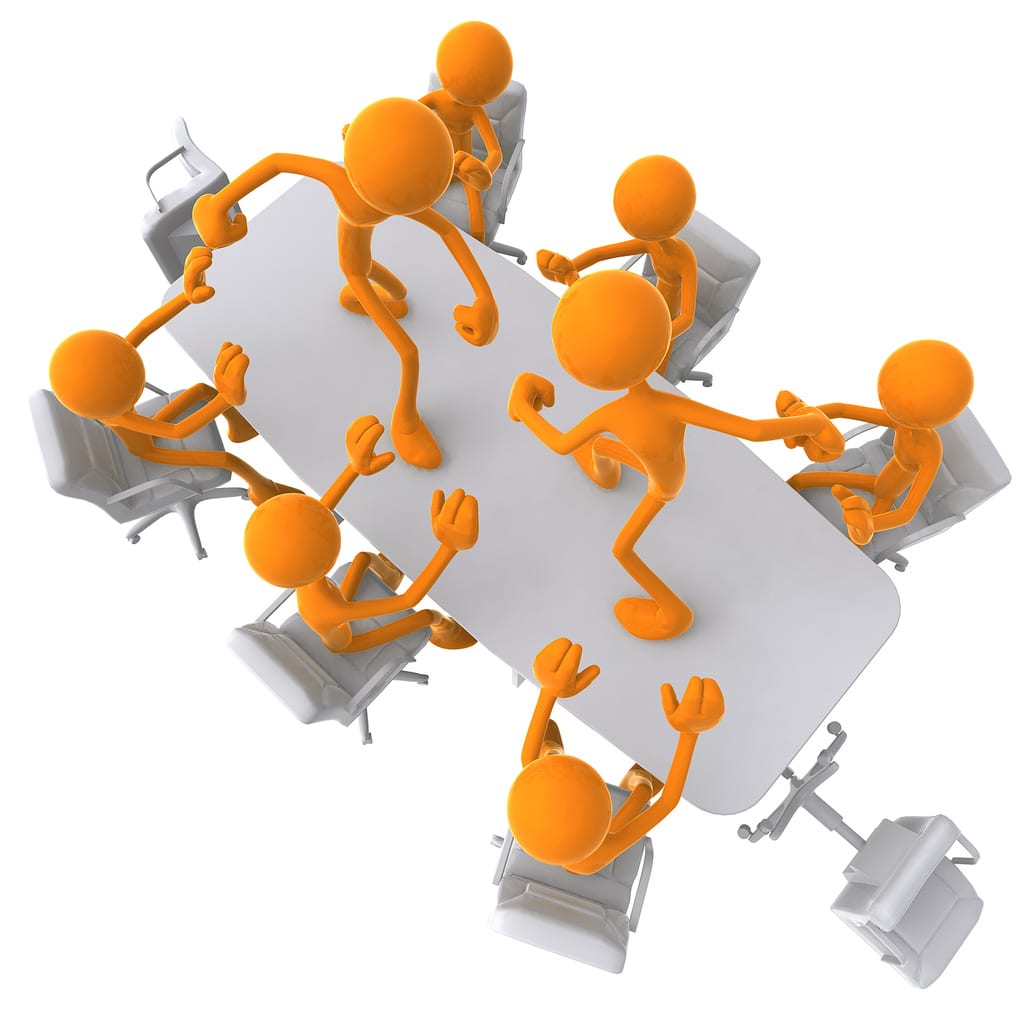Conflict and dispute resolution are major topics, regardless if you are a facilitator for teamwork workshops or teach communication or leadership skills. Below are some activities that you can use, which will assist you in speedily identifying issues that can come up during these programmes. There are also procedures that will help you to succeed in handling these awkward interactions.
Arm Wrestling Activity
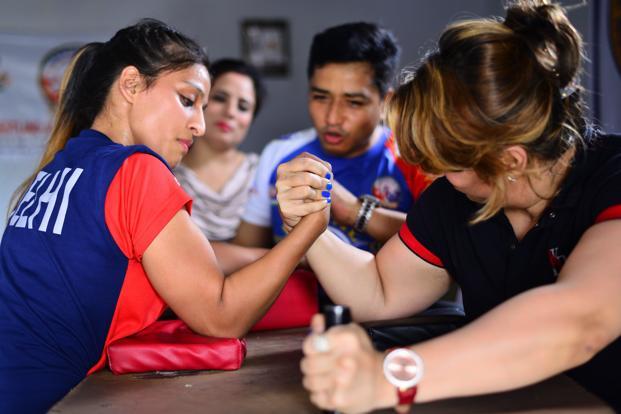
This is a very fast and simple activity. Get the group to form into pairs and prepare for an arm-wrestling challenge. You can leave it up to the individual teams to tackle the challenge as a genuine “arm wrestling” action or use it to produce benefits for both members of the team.
Make sure to include time for Reflection and debriefing techniques. During the discussion after the activity, you will discover the trend where expectations are made, and tactics are used to reach either a win or lose situation.
Knot or No Knot Activity
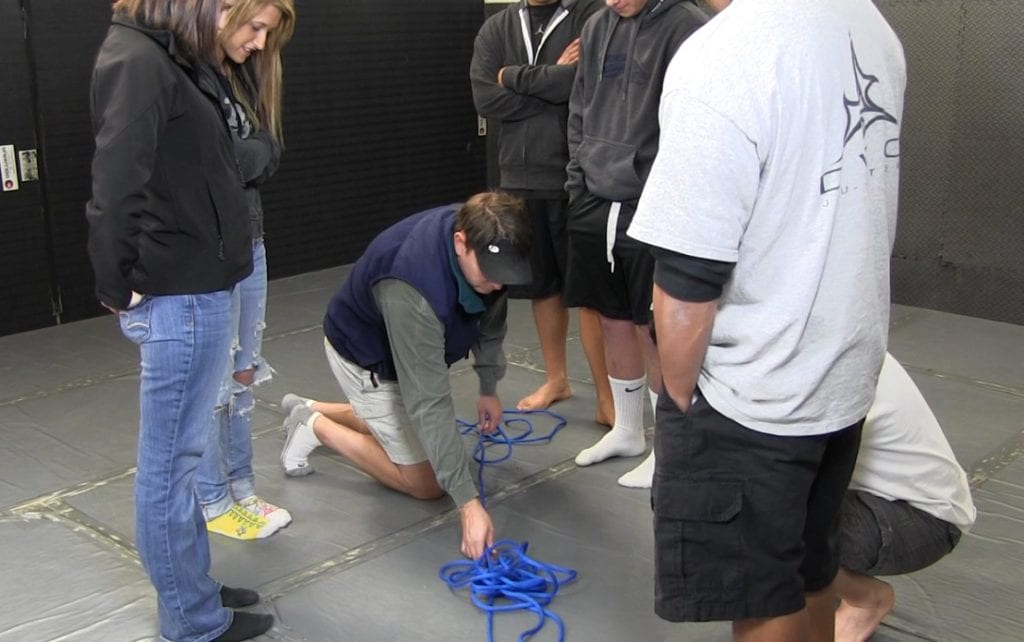
This activity can be very effective if it is done correctly. To begin with, take a length of rope about 6 meters long. Preferably, use one with more than one color to make the exercise more of a challenge.
Ensure that the rope is laid in a heap on the floor, out of sight of the group. The aim of the exercise is for the group to agree on the outcome. When the ends of the rope are pulled, will it result in a “Knot” being formed or result in “No Knot.” You can give the group an opportunity to examine the rope. Before they start, they must come up with a penalty, which the whole group will have to perform if their prediction is incorrect.
Now the entertainment begins. You will find in the group, that there will be one or two individuals who feel very strongly about the outcome, either way. You need to concentrate on these individuals. There have been cases where the group made a unanimous vote and then asked that one person who conceded, why they changed their minds. This can result in a group discussion and may end up with the whole group changing their decision.
Another interesting thing is to approach the person who opposed the whole group’s decision. Ask them what their reaction would be if they were made the leader of the group and they were given the final say.
It has been proved from experience, that the group will invariably choose an easy penalty to perform. After they have made a unanimous decision, approach the person who opposed the decision. Ask them how hard the penalty would need to be in order for them to stand by their original decision.
Take for example, if each one had to pay in $100 or $1, 000, or what if you hurt someone by making the wrong decision. This activity can be very useful in many different ways, but it is best dealing with dispute resolution.
The Orange Negotiation

There is a book written by Roger Fisher entitled “Getting to Yes”, where the “Orange Exercise” was first explained. It involves a challenge, two children are arguing over one orange, which is the last one left in the fruit bowl. In this situation, these children learned that someone needed the orange peel for baking and someone else needed the orange juice to satisfy their thirst. There is another version of this situation by Susan Meredith on LinkedIn, which is used as a negotiation activity and is described below:
Divide your group into two teams and call the one “Team A” and the other “Team B”. You, as the leader, take on the role of “Mandez”, you are the custodian of the last remaining Mandezine Orange. This is a very scarce type of orange and both teams need to negotiate with you.
Both teams are given a scenario, making it clear that they need to buy the unique fruit. They are also instructed to only communicate with the grower, one member at a time. When instructing the teams individually, “Team A” understands that they need to have the orange rind in order to invent a nuclear element. They must then come up with some convincing, unforeseen and humane reason for acquiring the orange. It appears that their resources have no limit, which can cause them to become careless and conceited.
On receiving their instructions, “Group B” learns that they must acquire the pulp of the orange to produce a serum that will protect pregnant women from a fatal disease, which is devastating the surrounding area. It is understood that if pregnant women do not get the serum, they will fall desperately ill and die.
During the course of the exercise, both teams may come to realize that they could bypass Mandez and communicate with each other directly. As soon as they discovered that they required different parts of the orange, they began to co-operate with each other and came up with a satisfactory solution, even agreeing to share the costs. The result was a realistic profit for Mandez, even although the requirements had completely changed.
There is another version of this activity you can try named “The Ugli Orange Exercise” and was created by “Search for Common Ground”.
Nine Dots Challenge
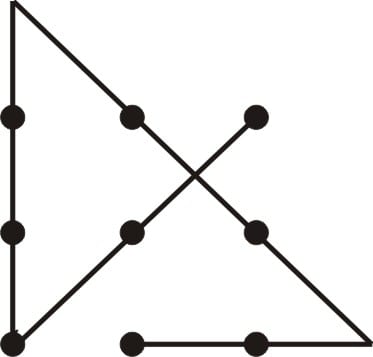
This is one of those fast “think outside the box”challenges. Start with a blank piece of paper and draw nine dots in a grid, “3x 3”. The challenge will be to connect all of the nine dots, only using 4straight lines and not allowing the pencil to be lifted off the paper. If you are struggling with this challenge, below you will find the solution, but before you consult it try to solve the problem first.
Start with your pencil in any of the corners of the grid, and then draw a diagonal line across to the opposite corner of the grid. Next, draw a horizontal line from where you finished with the first line, to a dot on the other side of the grid. Ensure that you extend this line to beyond the last dot, to an invisible dot in the next space.
Follow from this ‘invisible dot’ and draw a diagonal line right through all the dots in the middle. Again, make sure the line extends beyond the last dot to another invisible dot on the same line (or next space on the same line). All you need to do now is to draw a vertical line right through the two dots that remain.
Partisan Perceptions Activity
This activity is taken from a book called “7 Habits of Most Efficient People,” written by Steven R Covey. The story is based on the fact that many people often come to the negotiation table with the wrong frame of mind. The attitude involves only looking at the situation from their own viewpoint, which makes it almost impossible to come to any type of settlement.
In the story, Covey relates to an incident on the subway train:
There were a group of children acting unruly in the same coach that he was riding. As the situation got worse, it really started to annoy him. So, he decided to go to the children’s father and asked that he please control his children. The father answered him by saying he was unaware that his children were annoying anyone.
Covey considered this to be very odd, as in his estimation the children were really out of control. He questioned the father, asking how it was possible that he was unaware of the situation. The father continued to explain that he was very sorry, but he did not notice his children were out of control. He then began to explain that he had just come from the hospital, where he and the children had received the news of his wife, who had passed away. He then admitted that neither he nor his children knew how to respond to the situation.
If this story is told in the right way, all the people in the room will start to experience strong emotions. Gaining an understanding of the situation, turned everybody’s feelings of judgment towards the father, into sympathy for him and his children. Covey himself began to change his attitude and also felt sympathy for the father and his children. He then made an offer to assist the father and his family, helping them better cope with the situation.
Covey explains that this problem is named “paradigm shift”. This clearly proves that every thought is governed by ‘the paradigm,’ which is usually right in front of our noses.
Old Lady/ Young Lady and other Optical Illusions
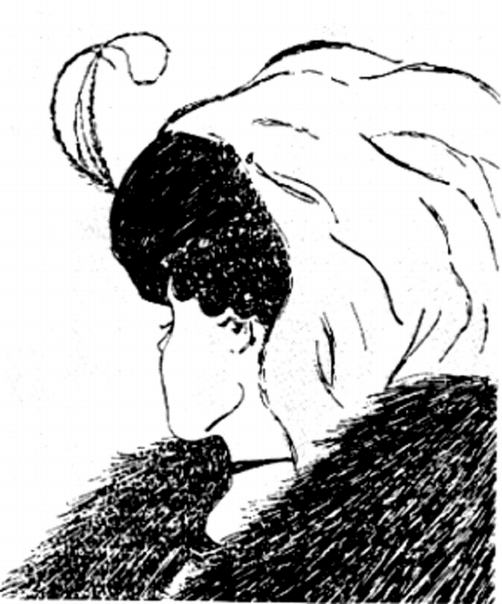
There is a fun activity you can use, from time to time. The activity is a sequence of“optical illusions,” which are images like “old woman/young women”. When a group of people is shown these images, they see them from different angles, and it appears they all see something different.
You need to have about six of these images, these can either be on slides, on the computer or just printed on a sheet of paper. Hand out 6 blank sheets of paper to the group and instruct them to number the sheets of paper from 1 to 6.
Tell them that you are going to show them a sequence of images, but each image will only be able to be viewed for 10 seconds. After viewing the images, they must write down what they think they saw on the paper. After they have finished, they need to turn to their neighbor and compare their findings.
The results of the activity should be obvious, as each person saw the exact same images. However, in each case, this is not so, as most of the members saw a different image from those of their neighbors.
Afterward, have a discussion and ask questions, such as, why are there people who saw different images? This can be attributed to a person’s experience, level of education and a number of different factors, which cause them to view objects differently.
Rattling Assumptions (Think-outside-the-box Exercise)
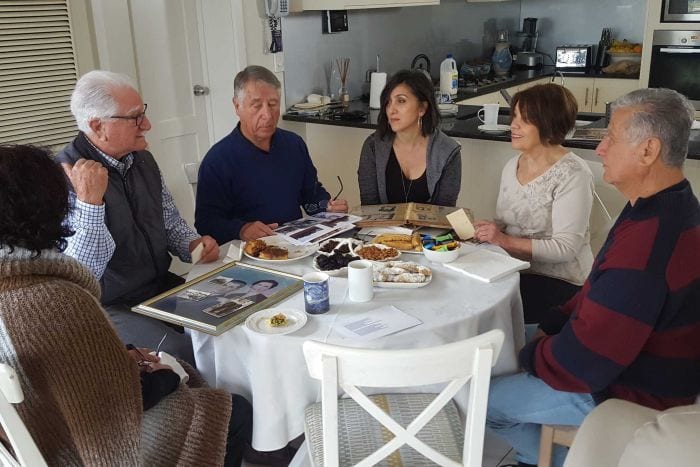
This game can be played while sitting around the table, with friends or family, or even after a meal. Tell them to visualize in their minds the pattern the silverware is portraying, or the pattern the cutlery has formed. Then get them to assign a number from 1 to 5 for each pattern they visualize. Explain the process to them then change the pattern and get them to say what the number of the particular pattern is:
Lay Out 1
Put one item of choice on the table in a vertical position, and then signify by showing one finger on the table or on your knee. Tell them this is number 1.
Lay Out 2
Put two items of your choice on the table in a vertical position, and then signify by showing two fingers on the table or on your knee. Tell them this is number 2.
Lay Out 3
Put three items of your choice on the table in a vertical position, and then signify by showing three fingers on the table or on your knee. Tell them this is number 3.
Lay Out 4
Put four items of your choice on the table in a horizontal position, and then signify by showing four fingers on the table or on your knee. Tell them this is number 4.
Lay Out 5
Put five items of your choice on the table in a horizontal position, and then signify by showing five fingers on the table or on your knee. Tell them this is number 5.
Lay Out 6
Put six items of your choice on the table in a horizontal position, and then signify by showing six fingers on the table or on your knee. Tell them this is number 6.
If you want, you can create as many patterns as you like, but remember that the exact number will always be the number of fingers you showed on the table or your knee. The exercise has nothing to do with the pattern portrayed by the items.
In most cases, it doesn’t matter if you instruct the people they must “think outside the box,” they invariably concentrate on the pattern formed by the items. Most people are not paying much attention to the number of fingers you are showing.
During the reflection session, try to discuss how some were able to see what was required of them and the rest did not.
Pushy Pairs
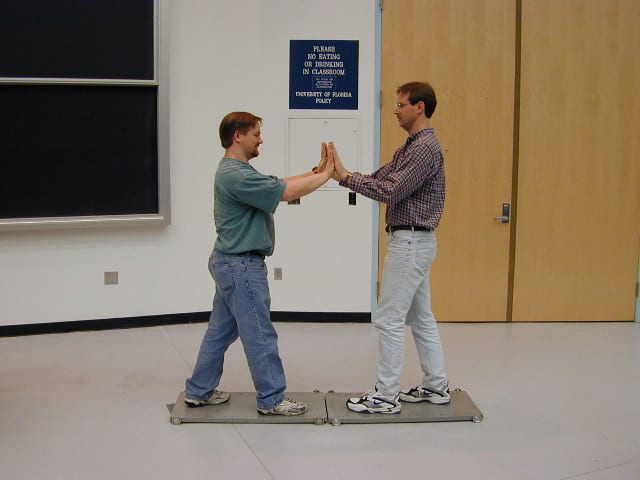
Divide the group into pairs and have them facing each other. They must then stretch their arms out at shoulder height in front of them, and also touch the palms of their partner. Now, they need to push as hard as possible against their partner, so make sure they are standing in a safe area.
Let them keep pushing against each other, then tell them to suddenly stop pushing and feel the relief it brings.
This situation is exactly what it is like when you are in disagreement with someone. Each person is trying as hard as possible to ‘push’ their viewpoint home. We can all learn from this exercise and then apply it in our everyday lives.

